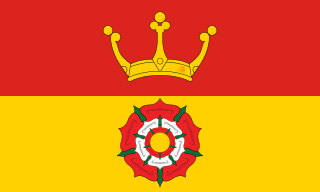
Hampshire is a county in South East England on the coast of the English Channel. The county town is Winchester, but the county is named after Southampton. Its two largest cities are Southampton and Portsmouth which are administered separately as unitary authorities; the rest of the county is governed by a combination of the Hampshire County Council and non-metropolitan district councils.
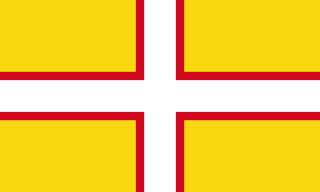
Dorset is a county in South West England on the English Channel coast. The ceremonial county comprises the unitary authority areas of Bournemouth, Christchurch and Poole and Dorset. Covering an area of 2,653 square kilometres (1,024 sq mi), Dorset borders Devon to the west, Somerset to the north-west, Wiltshire to the north-east, and Hampshire to the east. The county town is Dorchester, in the south. After the reorganisation of local government in 1974, the county border was extended eastward to incorporate the Hampshire towns of Bournemouth and Christchurch. Around half of the population lives in the South East Dorset conurbation, while the rest of the county is largely rural with a low population density.

Wimborne Minster is a market town in Dorset in South West England, and the name of the Church of England church in that town. It lies at the confluence of the River Stour and the River Allen, 5 miles (8 km) north of Poole, on the Dorset Heaths, and is part of the South East Dorset conurbation. According to Office for National Statistics data the population of the Wimborne Minster built-up area as of 2014 was 15,552.

Bournemouth is a coastal resort town in the Bournemouth, Christchurch and Poole council area of Dorset, England. At the 2011 census, the town had a population of 183,491, making it the largest town in Dorset. It is situated on the English south coast, equidistant from Dorchester and Southampton. Bournemouth is part of the South East Dorset conurbation, which has a population of 465,000.

Christchurch is a town and civil parish in Dorset on the south coast of England. The town covers an area of 19.5 square miles (51 km2) and had a population of 48,368 in 2013. It adjoins Bournemouth to the west, with the New Forest to the east. Part of the historic county of Hampshire, Christchurch was a borough within the administrative county of Dorset from 1974 until 2019, when it became part of the new Bournemouth, Christchurch and Poole unitary authority.

Poole is a large coastal town and seaport in Dorset, on the south coast of England. The town is 21 miles (34 km) east of Dorchester and adjoins Bournemouth to the east. Since 1 April 2019, the local authority is Bournemouth, Christchurch and Poole Council which is a unitary authority. Poole had an estimated population of 151,500 making it the second-largest town in the ceremonial county of Dorset. Together with Bournemouth and Christchurch, the conurbation has a total population of nearly 400,000.

Dorchester is the county town of Dorset, England. It is situated between Poole and Bridport on the A35 trunk route. A historic market town, Dorchester is on the banks of the River Frome to the south of the Dorset Downs and north of the South Dorset Ridgeway that separates the area from Weymouth, 7 miles (11 km) to the south. The civil parish includes the small town of Poundbury and the suburb of Fordington.

Alton is a market town and civil parish in the East Hampshire district of Hampshire, England, near the source of the River Wey. It has a population of 17,816 as of the 2011 census.
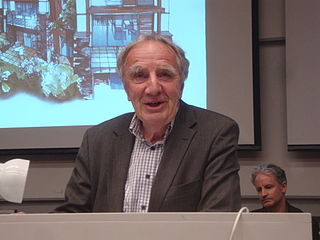
Sir Frederick Miles Warren is a New Zealand architect. He apprenticed under Cecil Wood before studying architecture at the University of Auckland, eventually working at the London County Council where he was exposed to British New Brutalism. Upon returning to Christchurch, and forming the practice Warren and Mahoney, he was instrumental in developing the "Christchurch School" of architecture, an intersection between the truth-to-materials and structural expression that characterised Brutalism, and the low-key, Scandinavian and Japanese commitment to "straightforwardness". He retired from Warren and Mahoney in 1994 but continues to consult as an architect and maintain his historic home and garden at Ohinetahi.

Highcliffe-on-Sea is a seaside town in Dorset in England, administered since April 2019 as part of the unitary authority of Bournemouth, Christchurch and Poole. It forms part of the South East Dorset conurbation along the English Channel coast. The town lies on a picturesque stretch of Solent coastline with views of the Isle of Wight and its 'Needles' rocks. It is part of the historic county of Hampshire.

Southampton is a port city in the ceremonial county of Hampshire in southern England. It is located approximately 70 mi (110 km) south-west of London and 15 mi (24 km) west of Portsmouth. The city forms part of the South Hampshire built-up area, which also covers Portsmouth and the towns of Havant, Waterlooville, Eastleigh, Fareham and Gosport.
Mudeford is a harbourside and beachside parish based on a former fishing village in the east of Christchurch, Dorset, England, fronting water on two sides: Christchurch Harbour and the sands of Avon Beach.
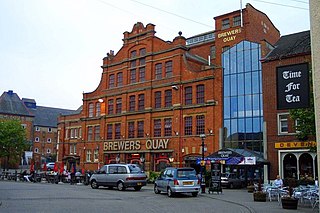
Weymouth Museum is a museum in Weymouth, Dorset, England. Its permanent home is in Brewers Quay on the south side of Hope Square near Weymouth Harbour. However, due to redevelopment of the building, it is currently operating from a pop-up shop at 40b St Thomas Street in Weymouth.

Christchurch Hospital is run by the University Hospitals Dorset NHS Foundation Trust. It is located in Fairmile in Christchurch, Dorset, England. The hospital was managed by The Royal Bournemouth and Christchurch Hospitals NHS Foundation Trust until the merger with Poole Hospital NHS Foundation Trust on 1 October 2020.

Christchurch is a town and former borough in the county of Dorset on the English Channel coast, adjoining Bournemouth in the west, with the New Forest to the east. Historically in Hampshire, it joined Dorset with the reorganisation of local government in 1974 and is the most easterly borough in the county. Its close proximity to the Cotentin Peninsula made it an important trading port and a potential target for invasion during the Napoleonic and Second World Wars.

Christchurch is a town, civil parish and former borough in the county of Dorset on the English Channel coast, adjoining Bournemouth in the west, with the New Forest to the east. Historically in Hampshire, it joined Dorset with the reorganisation of local government in 1974 and is the most easterly borough in the county. The town has existed since 650 AD and its close proximity to the Cotentin Peninsula made it an important trading port and a potential target for invasion during the Napoleonic and Second World Wars.

The Bournemouth trolleybus system once served the town of Bournemouth, then in Hampshire, but now in Dorset, England. Opened on 13 May 1933, it gradually replaced the Bournemouth tramway network.
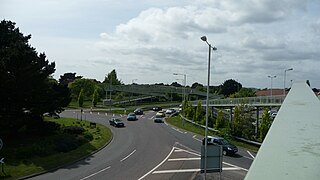
Somerford is a district in the unitary authority of Bournemouth, Christchurch and Poole. It lies in the historic county of Dorset. It borders with Mudeford and is intersected by the Somerford Road (B3059). On the north side is an area of residential housing, originally developed as a council estate in the 1950s. The district has three schools: Somerford Infants, Somerford Junior and The Grange School. The present day biggest employer is BAE Systems. Historically, the biggest employers were Airspeed, de Havilland and Gardner's.

Bournemouth, Christchurch and Poole (BCP) is a unitary authority area in the ceremonial county of Dorset, England. It was created on 1 April 2019 by the merger of the areas that were previously administered by the unitary authorities of Bournemouth and Poole, and the non-metropolitan district of Christchurch. The authority covers much of the area of the South Dorset conurbation.




















